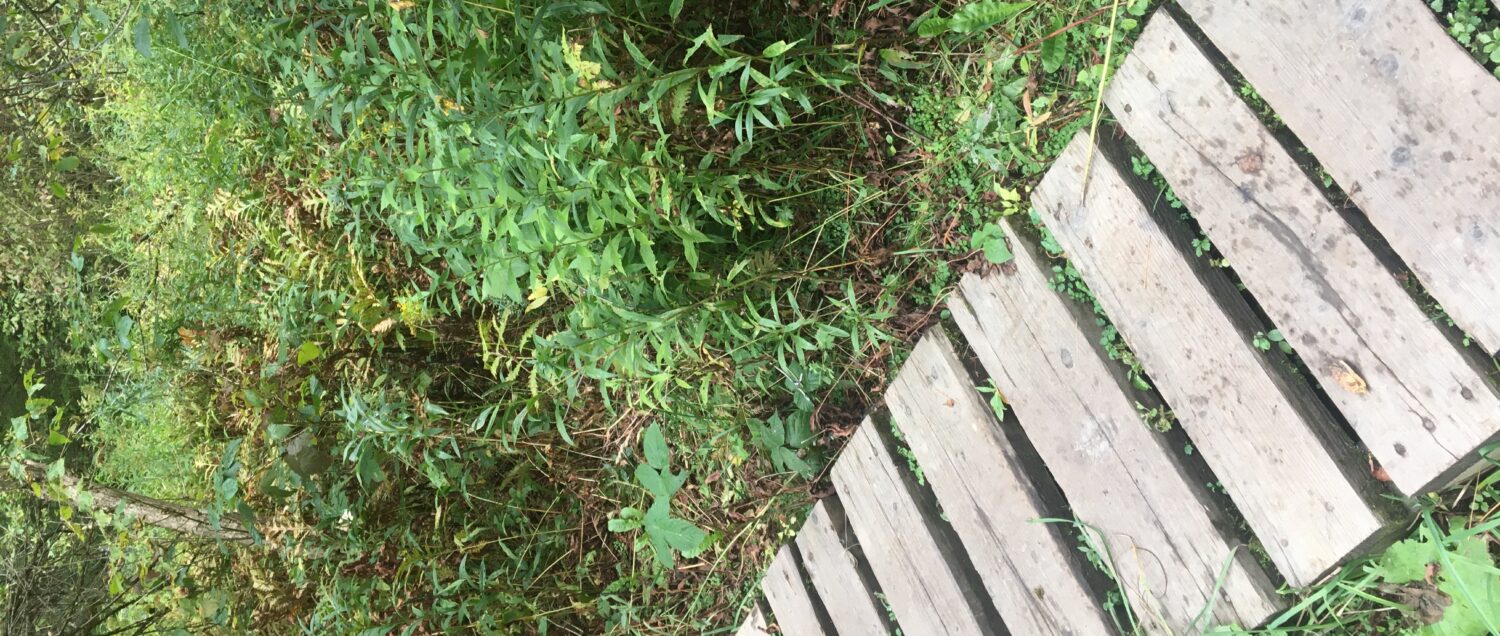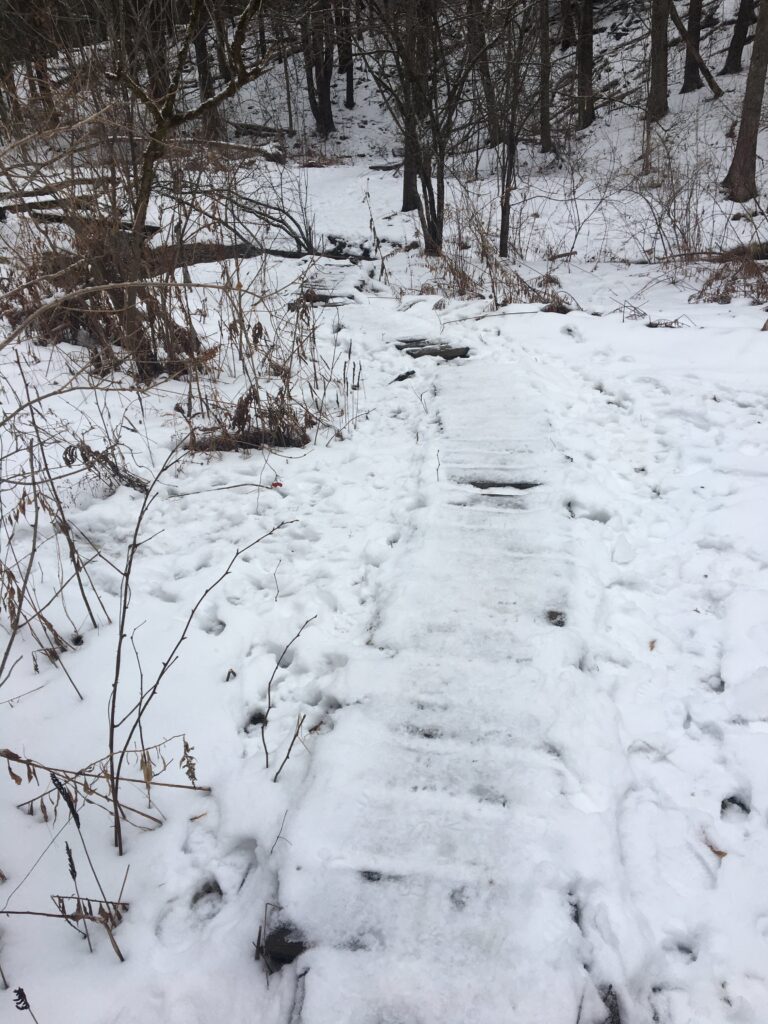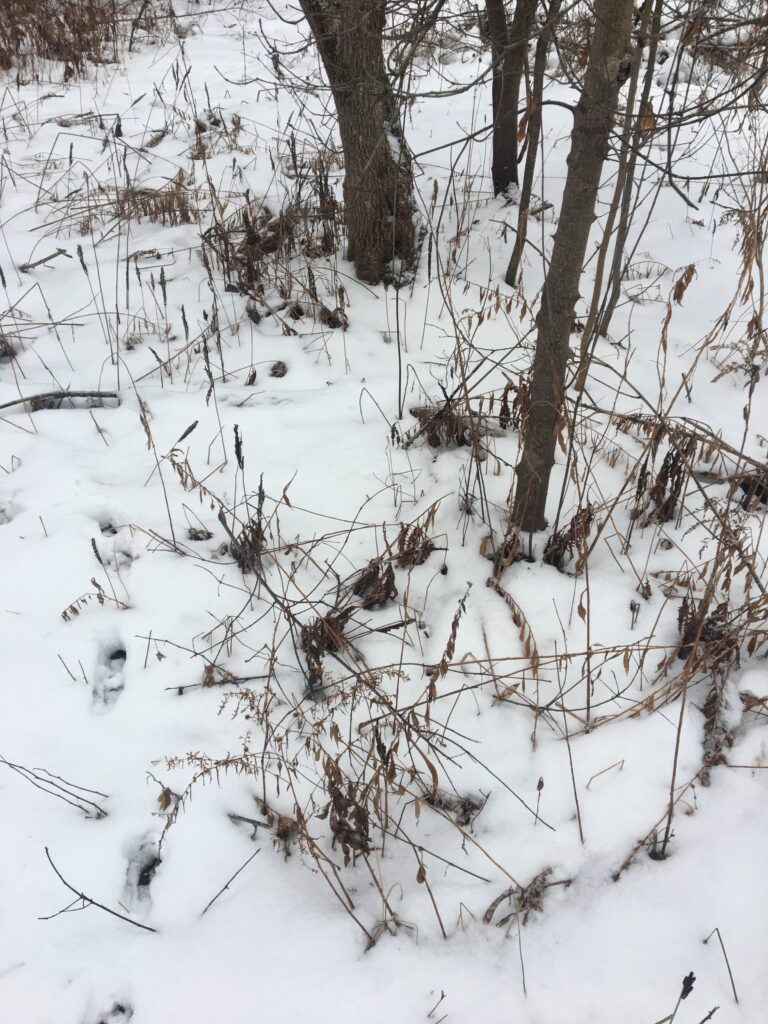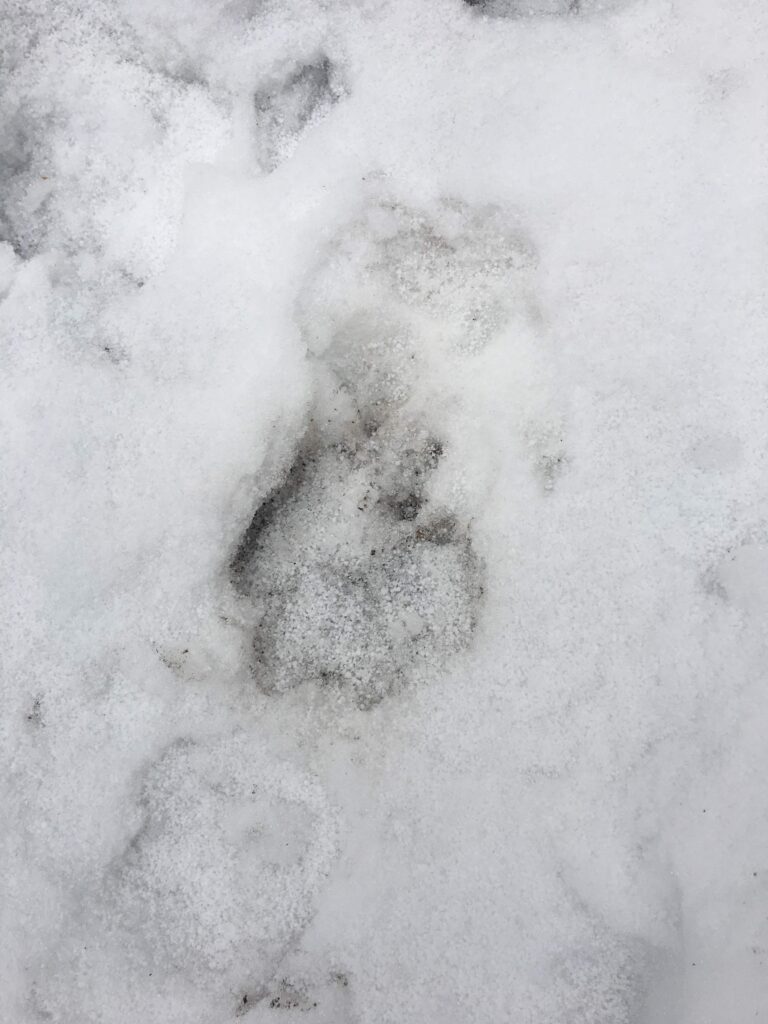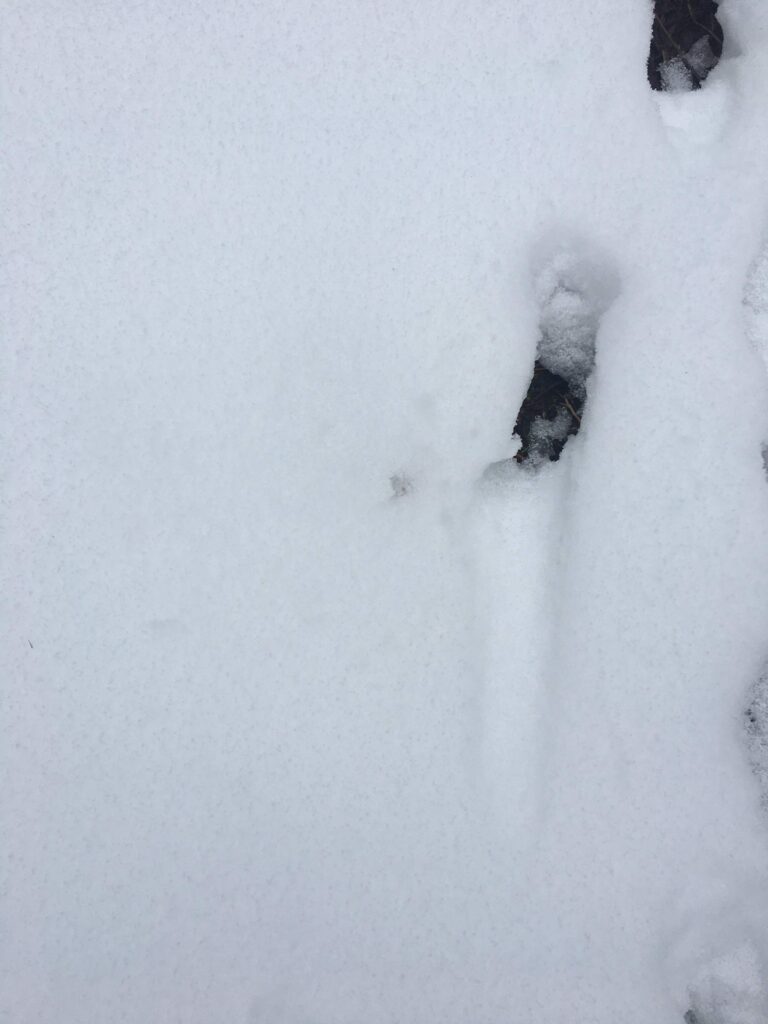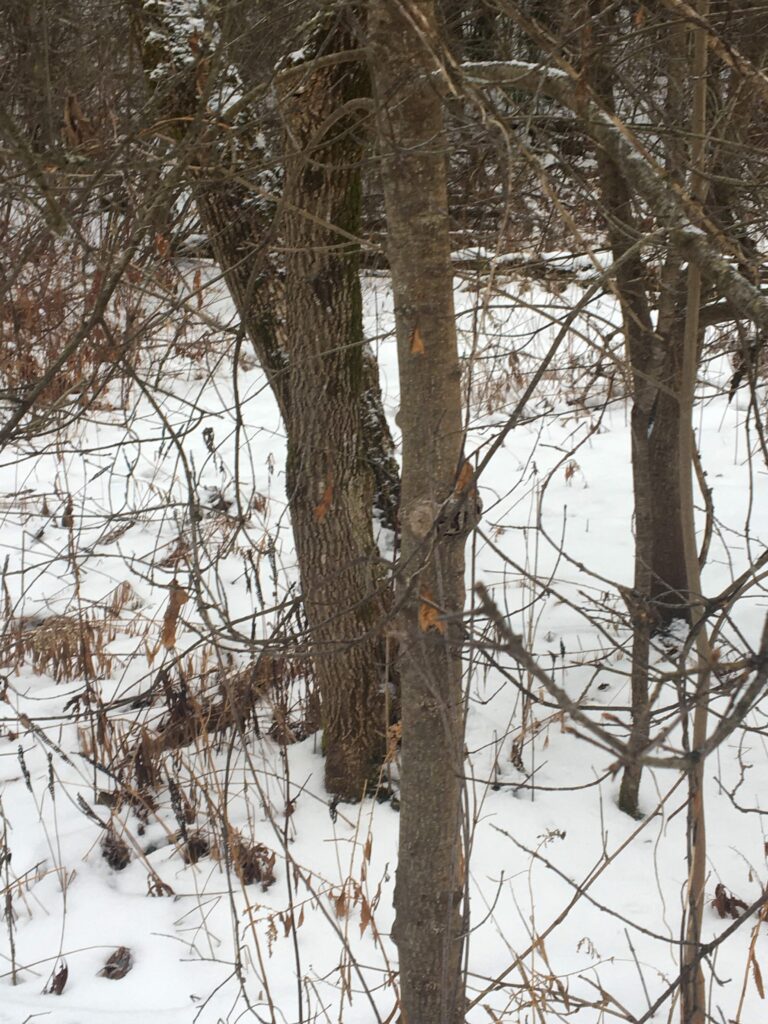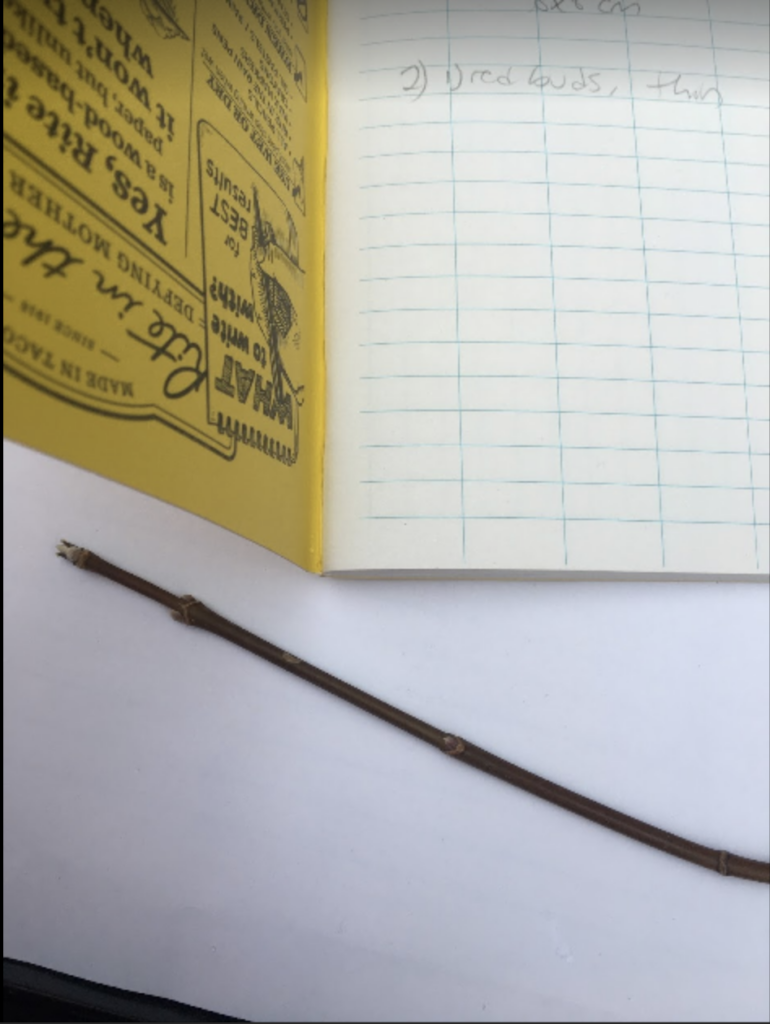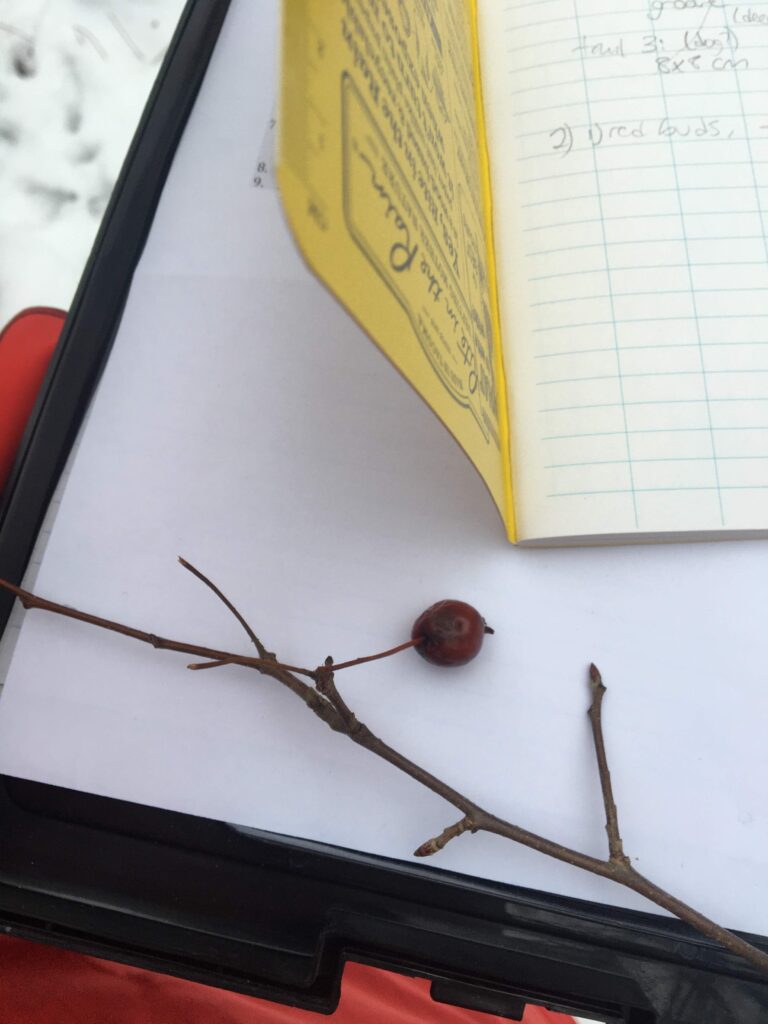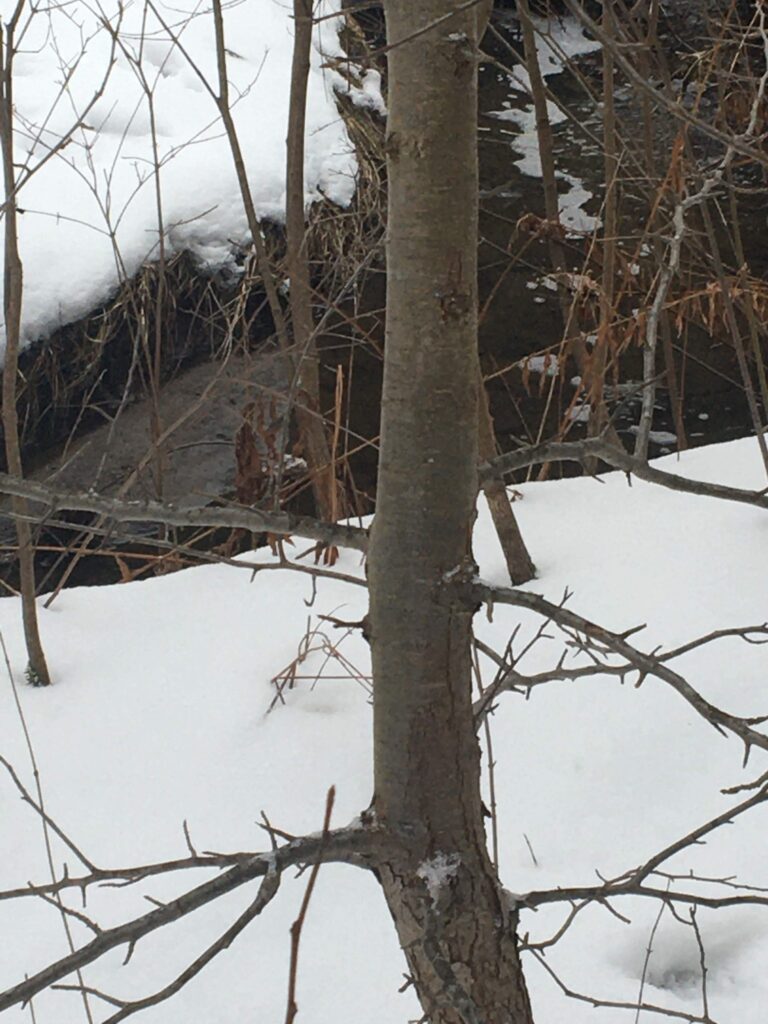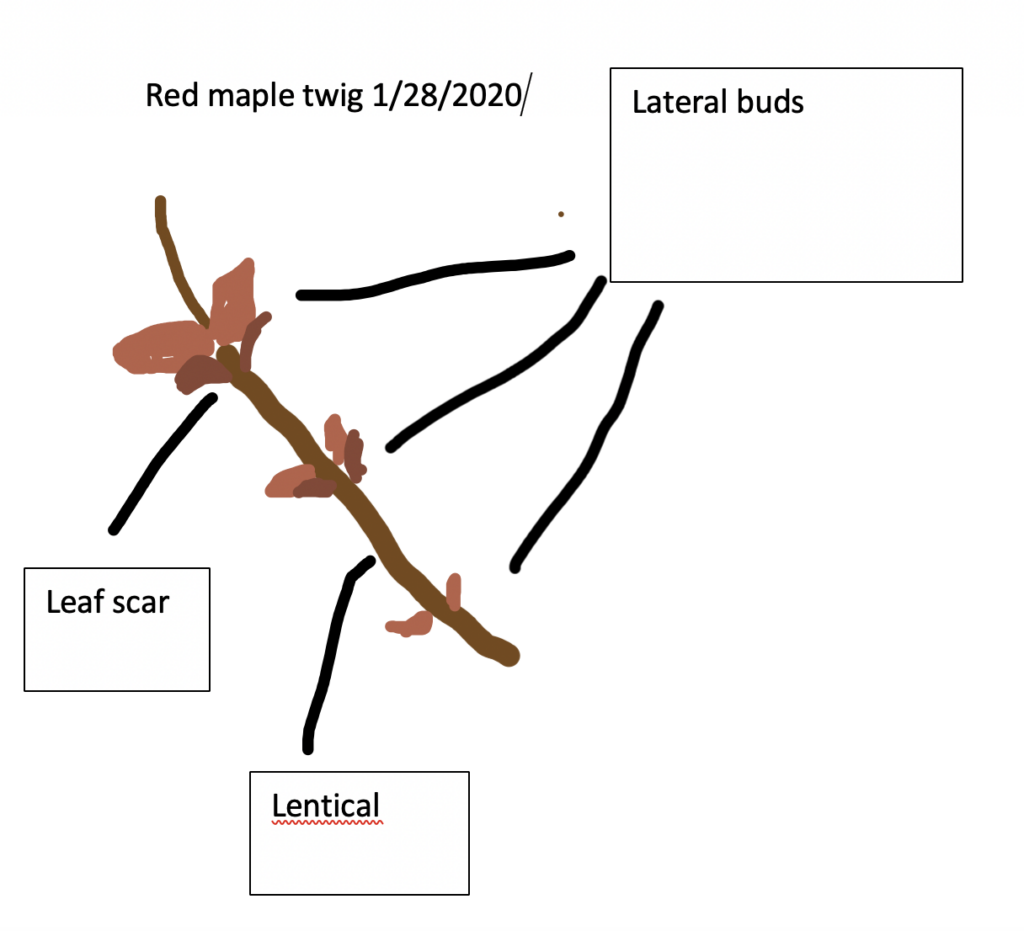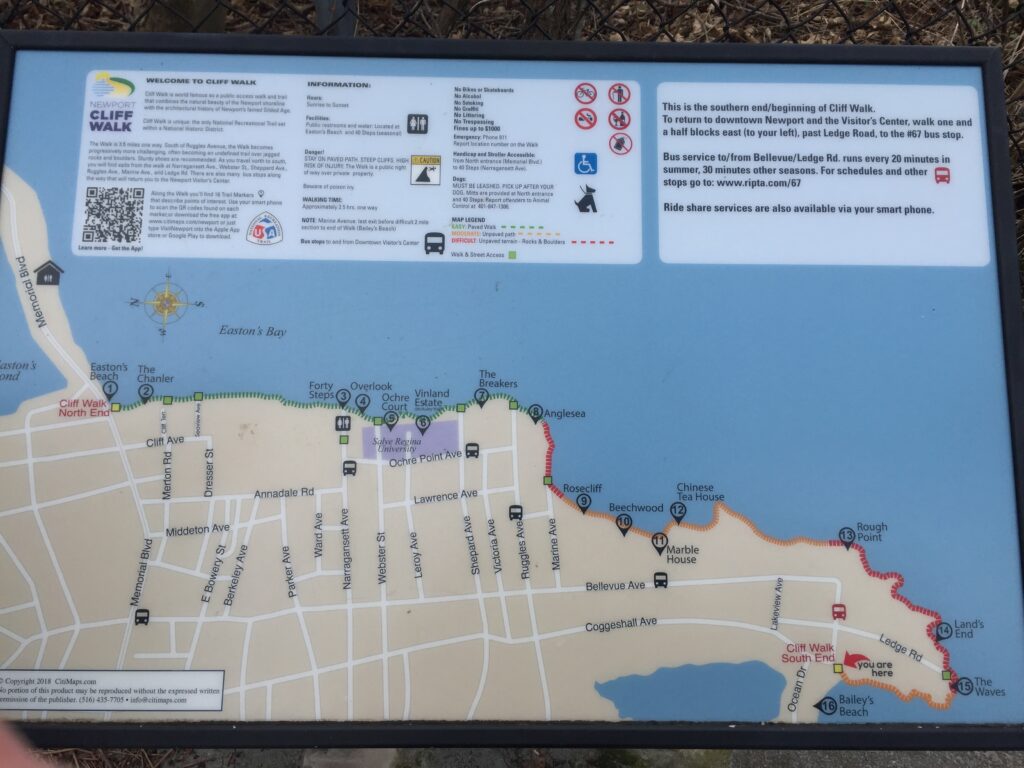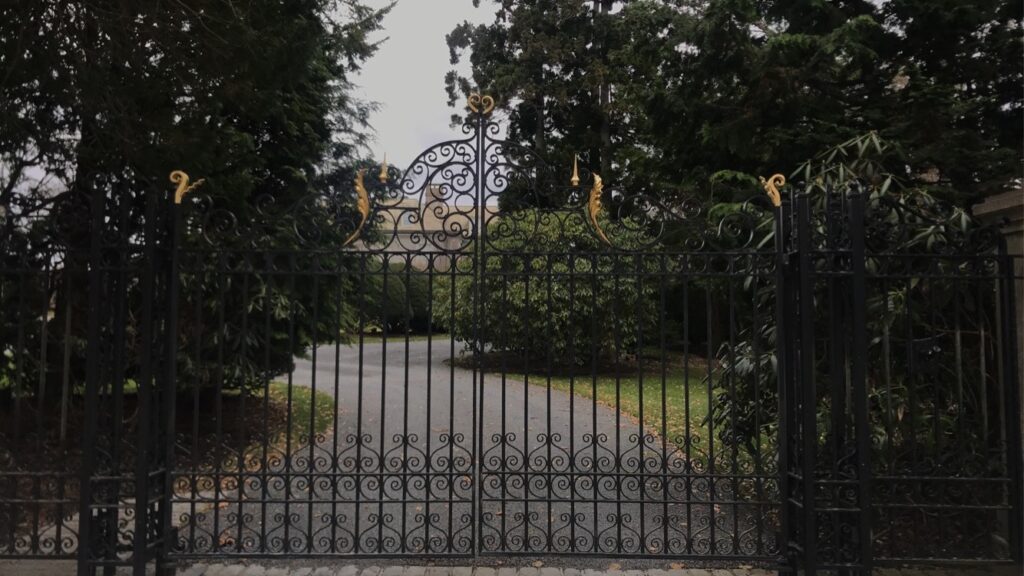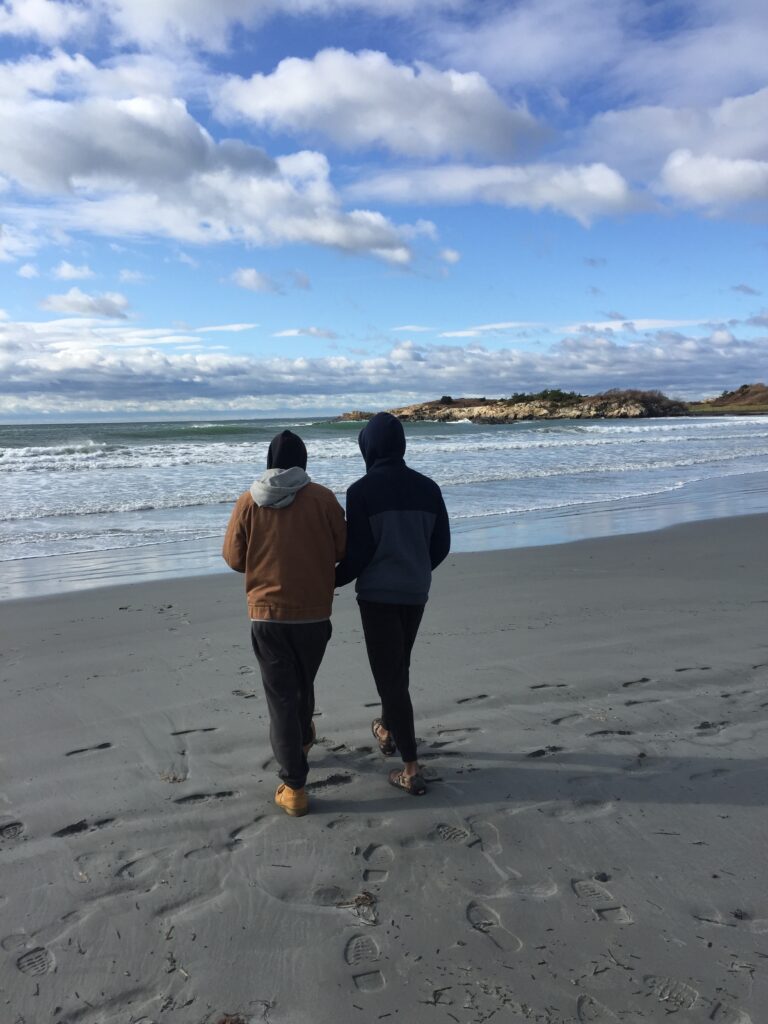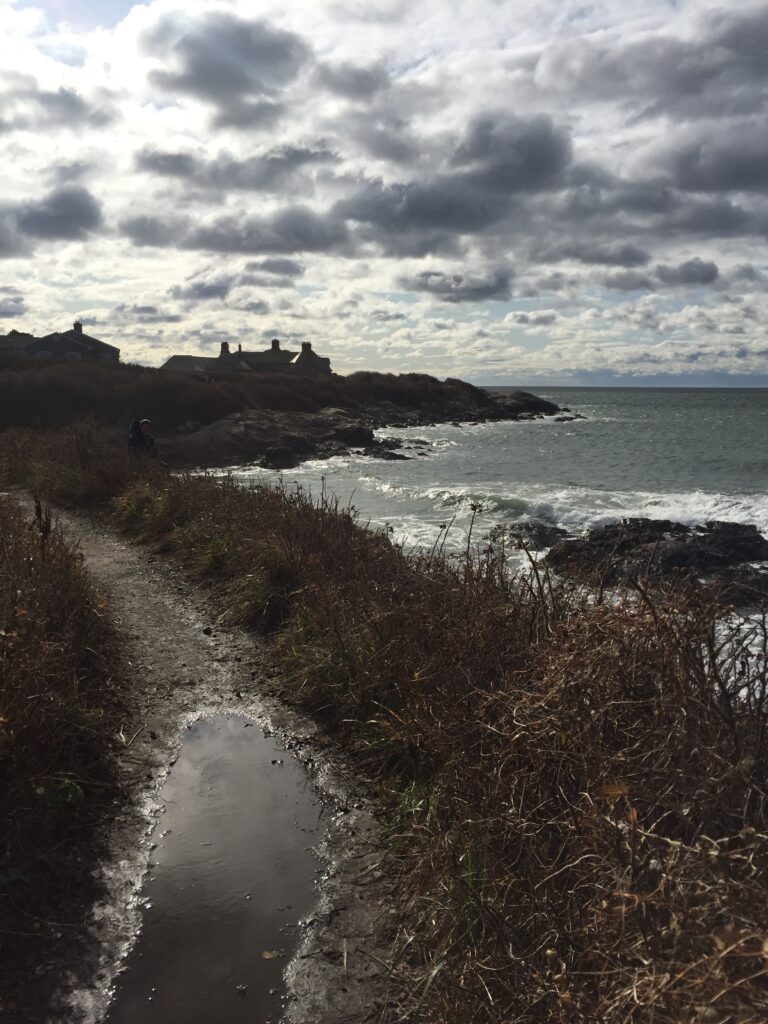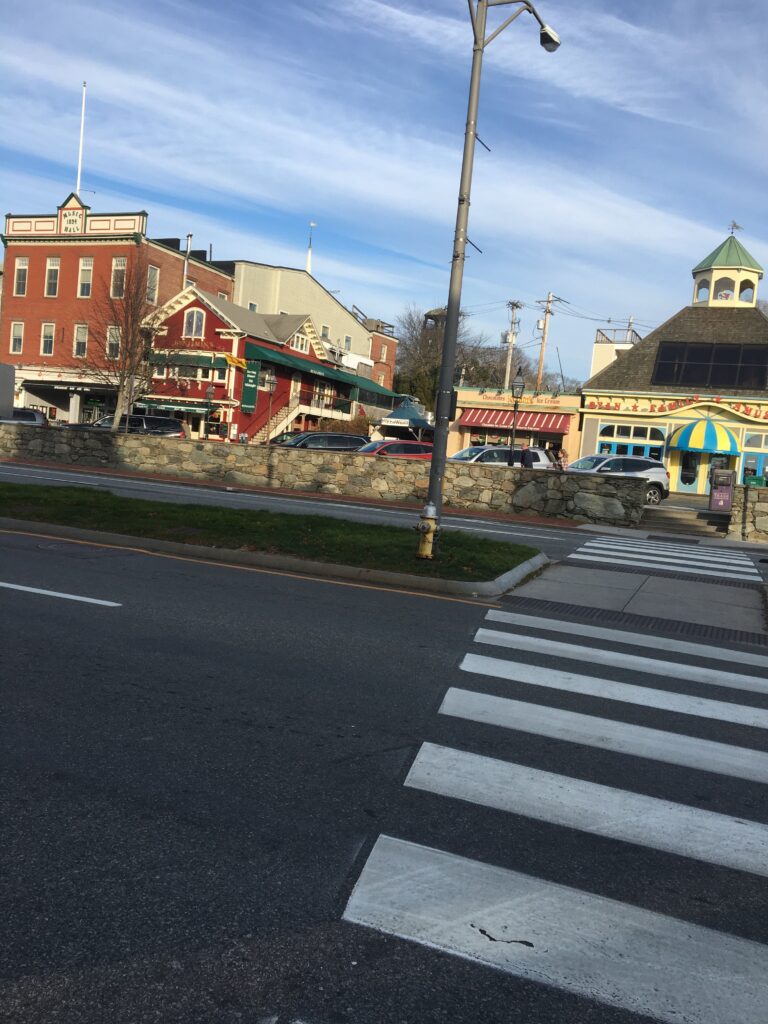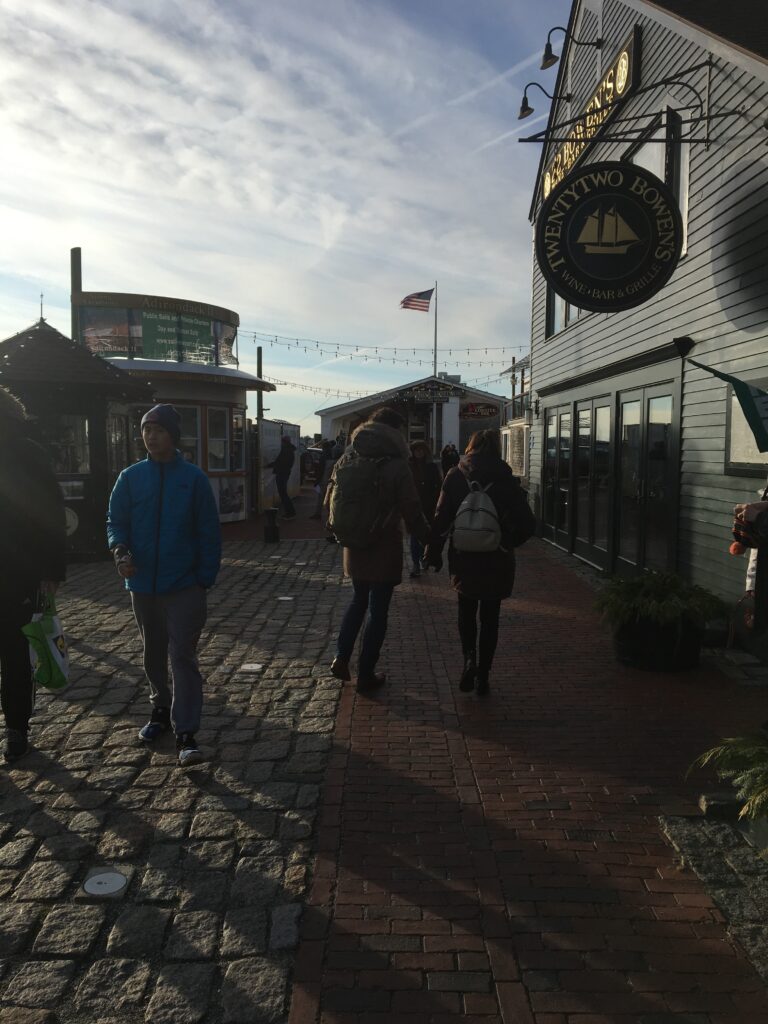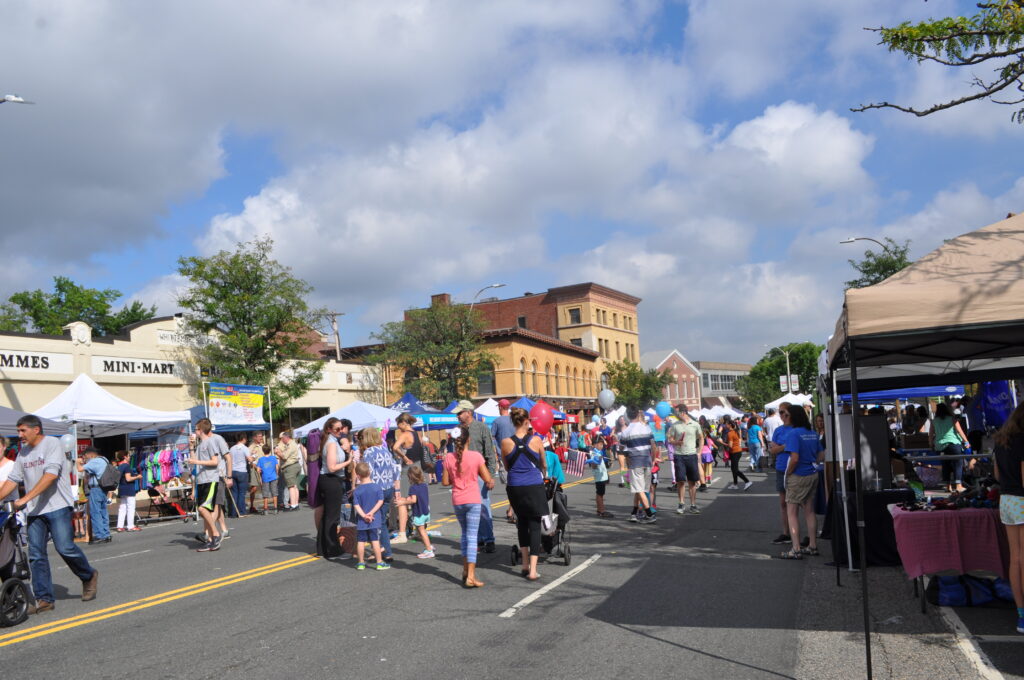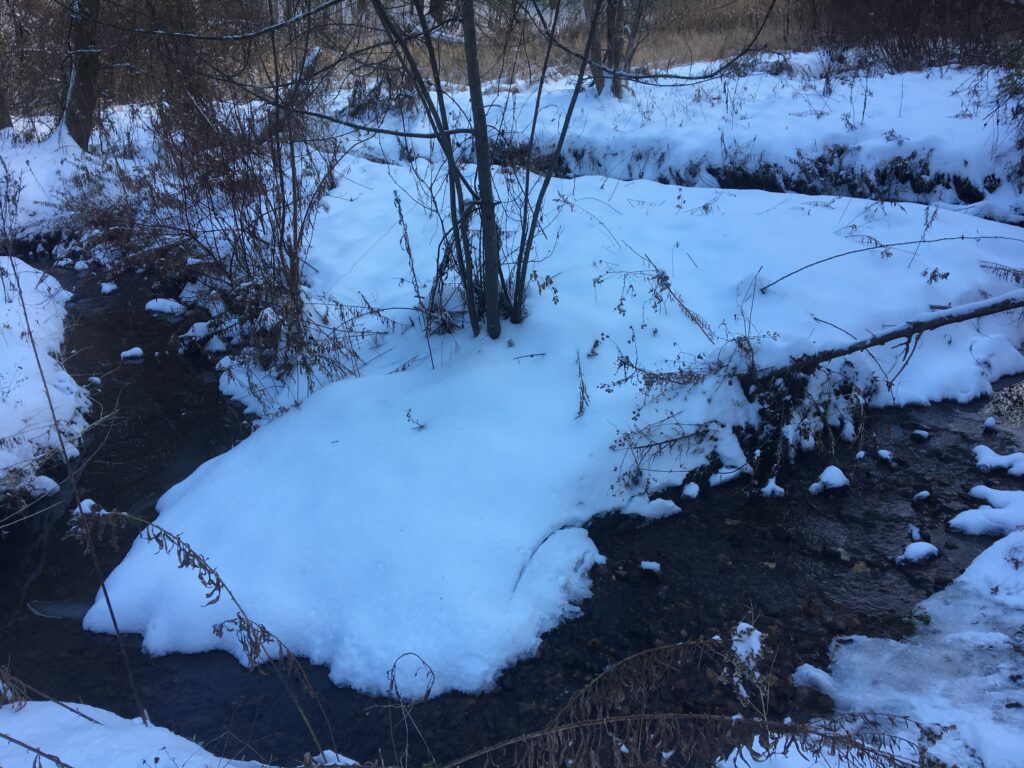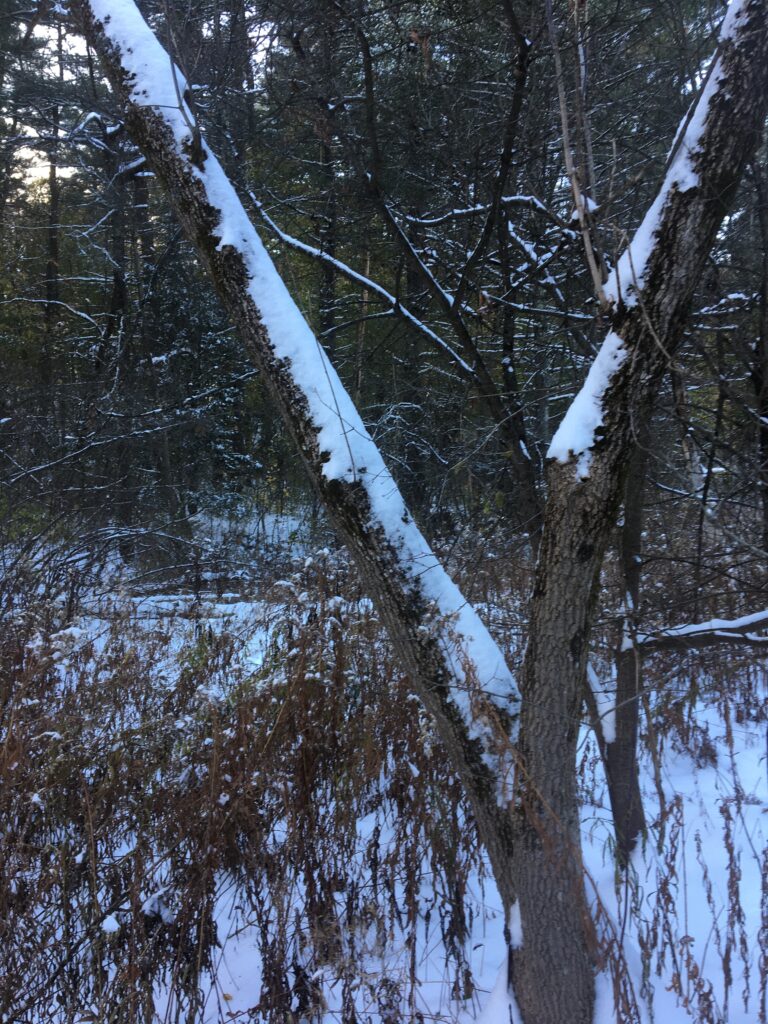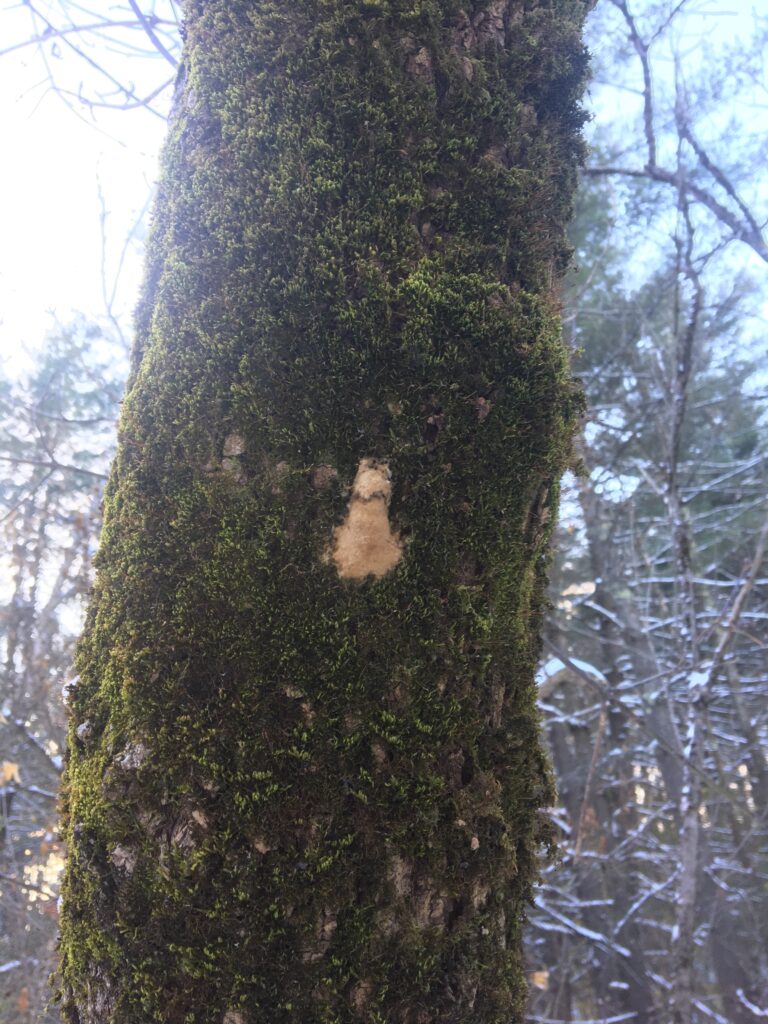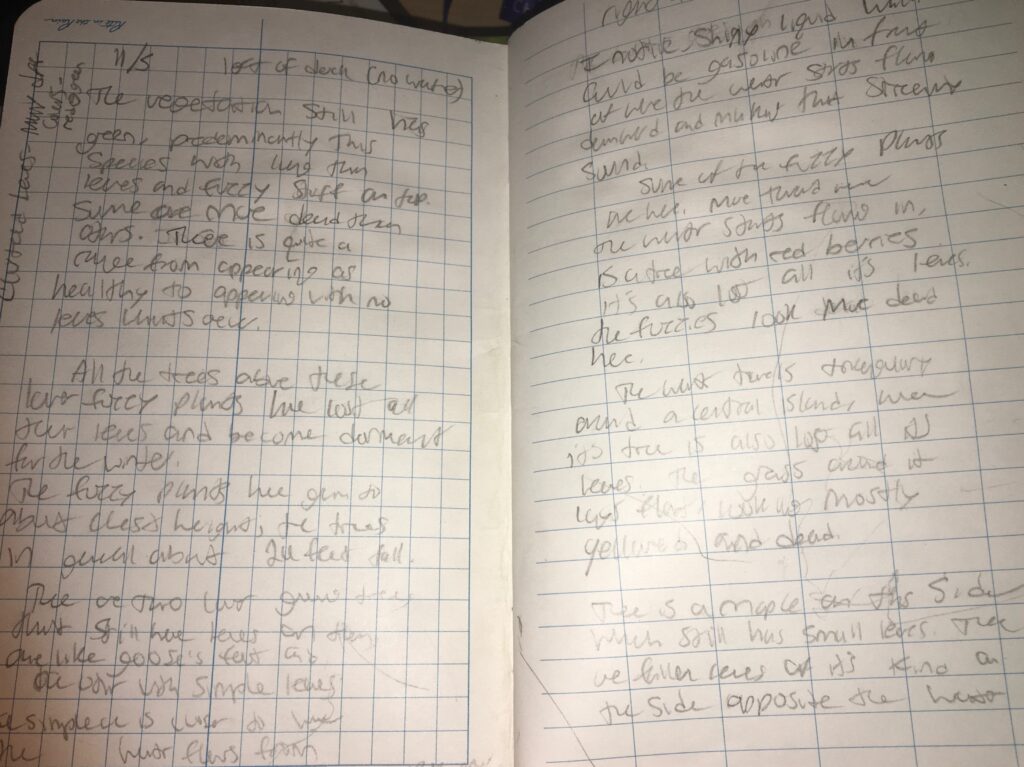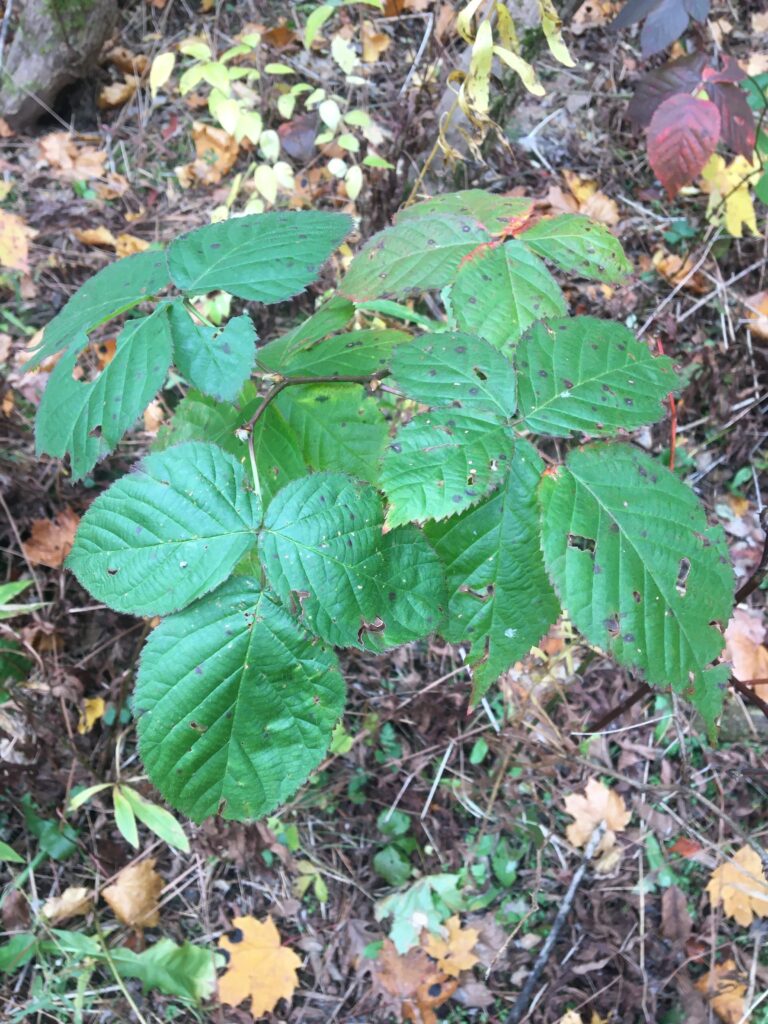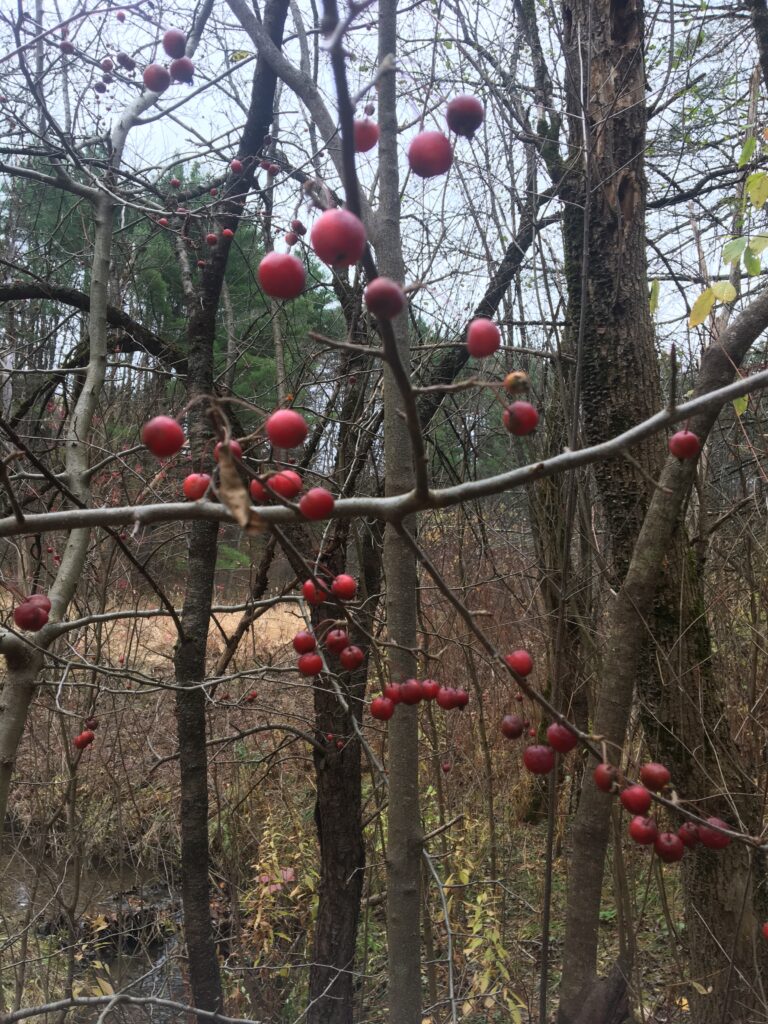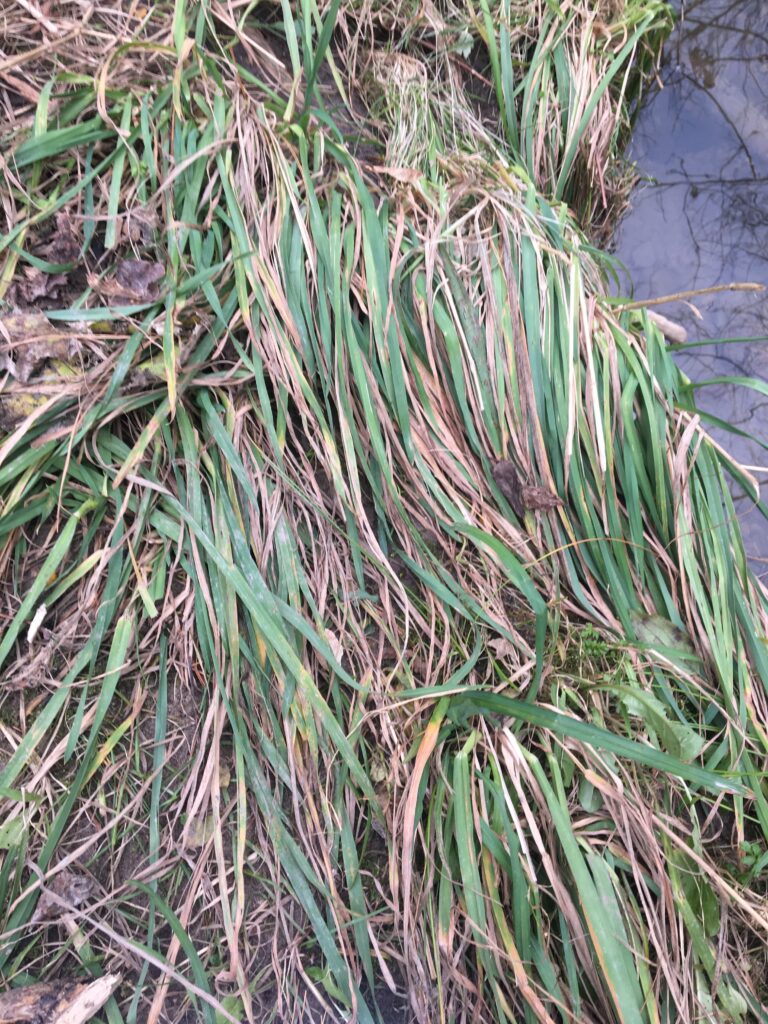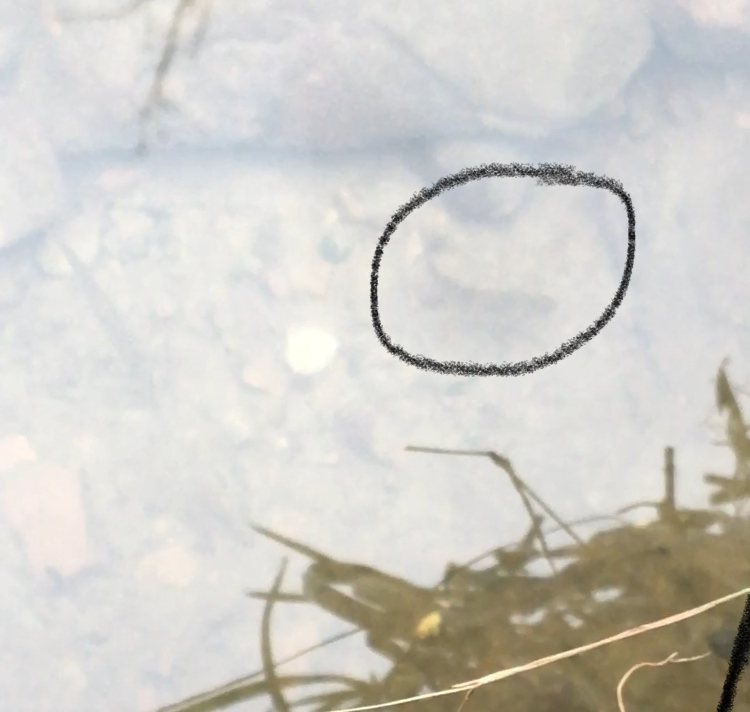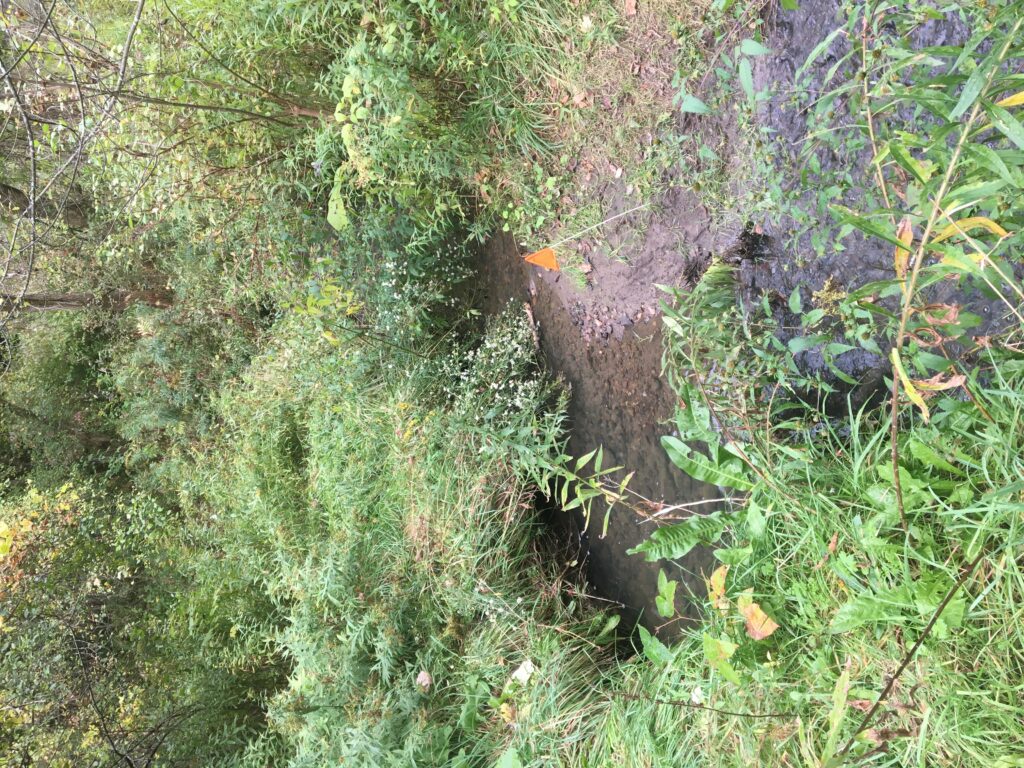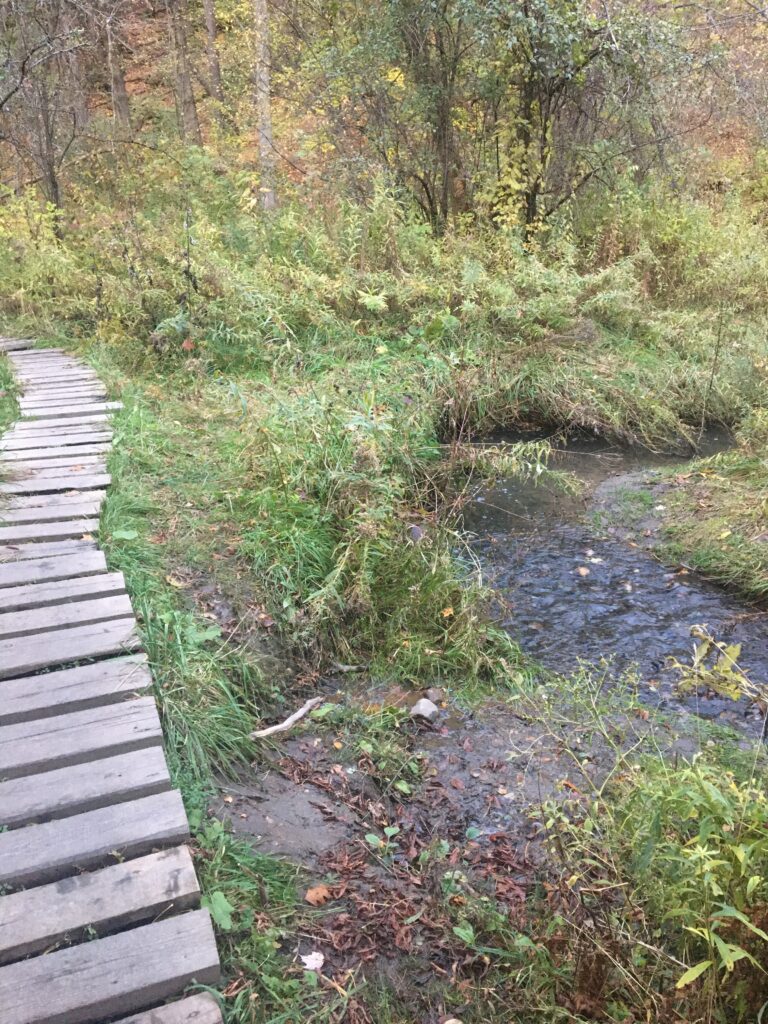Posted 2/29/2020
Part 1: Animal
Today, I found the track of a snowshoe hare! shown below:

Snowshoe hares are bounders (McDonald, 2020) which make their trails look like the one above. This one appears to have come down from a hill and turned toward the water. They live along the northern edge of north America (National Geographic), and change color with season, white in colder seasons and brown in warmer ones (Holland & Kaneko, 2019, p. 309). They can be nocturnal in winter, as they forage for plants to eat during the night and hibernate during the day (Holland & Kaneko, 2019, p. 357) or sit under conifer branches (Holland & Kaneko, 2019, p. 418)
During the warmer seasons, Hares will eat greens such as grasses, bu switch to twigs, bark, and buds in winter (Holland & Kaneko, 2019, p. 307). Its’ predators include “bobcats, fishers, Canadian lynx, foxes, coyotes, and great horned owls (Holland & Kaneko, 2019, p. 417)
Based on the trail of this Hare, I judged that it ha come down from hibernation to munch on the low growing foliage in the area. At night, snowshoe hares must run fast because of predators such as Barred Owls, last found in Centennial woods April 24, 2019 (“Centennial Woods Natural Area Check List”).
In terms of what it could have been coming to eat, there are small trees near the water such as Red Maple (Figure 2) , which the Hare could have been coming to eat the buds of. There is also still berries on the tree identified before as Common Winterberry (Figure 3), but the trail did not appear to go as far as that, perhaps because it followed the human trail after, which already had snow pressed down and would be easier for the hare to follow (Holland & Kaneko, 2019, p. 357)

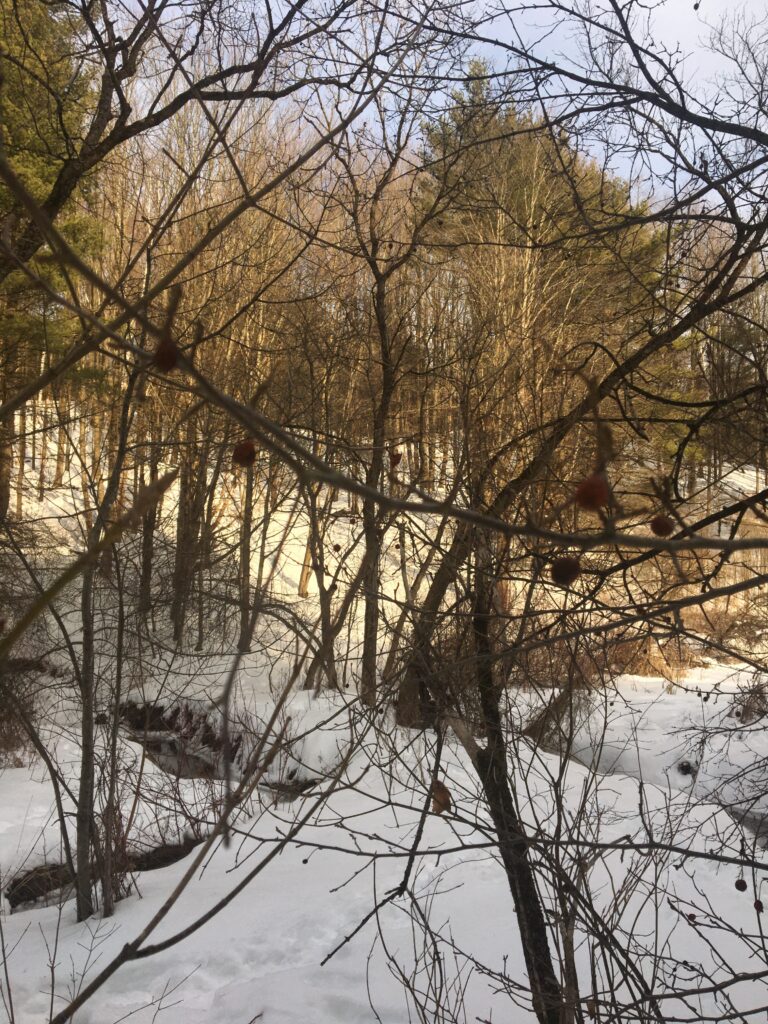
Part 2: Phenological Changes
The low-growing plants last seen are now not visible, likely due to the many snow storms that have happened since my last visit, and also a possible need for animals to eat them.
Last time, I did not make notes of bird chirps, but this time I did. I heard a black-capped chickadee (Barksdale, 1997) and saw signs of a woodpecker in action (figure 4).

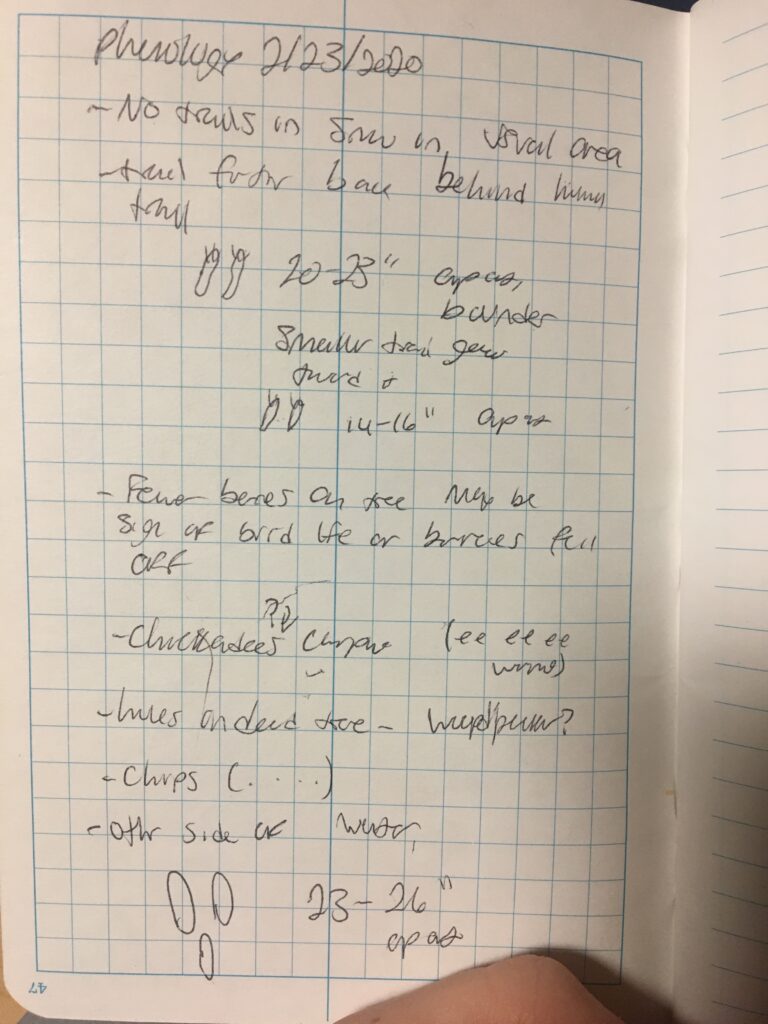
References
Barksdale, T. (1997, May 4). Black-capped Chickadee Sounds, All About Birds, Cornell Lab of Ornithology. Retrieved February 29, 2020, from https://www.allaboutbirds.org/guide/Black-capped_Chickadee/sounds
Centennial Woods Natural Area Check List. (n.d.). Retrieved February 29, 2020, from https://www.inaturalist.org/check_lists/57424-Centennial-Woods-Natural-Area-Check-List
Holland, M., & Kaneko, C. (2019). Naturally curious: a photographic field guide and month-by-month journey through the fields, woods, and marshes of New England. North Pomfret, Vermont.: Trafalgar Square Books.
Levine, L., & Mitchell, M. (2008). Mammal tracks and scat: life-size tracking guide. Heartwood Press.
McDonald, M. (2020, January). Winter Tracking & Subnivean Ecology. Winter Tracking & Subnivean Ecology. Burlington, VT.
Snowshoe Hare. (2018, September 21). Retrieved February 29, 2020, from https://www.nationalgeographic.com/animals/mammals/s/snowshoe-hare/
